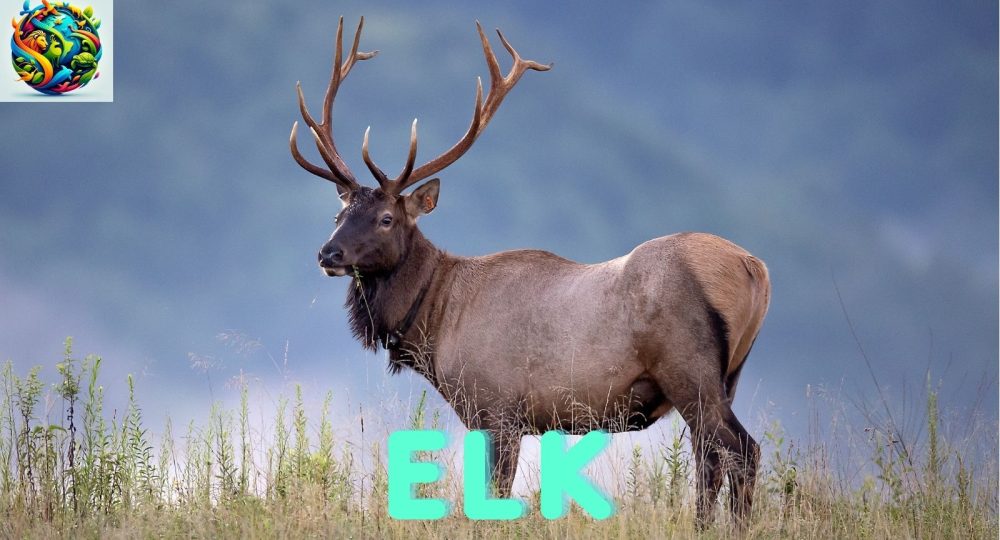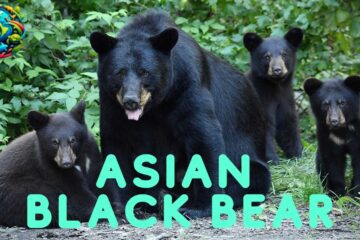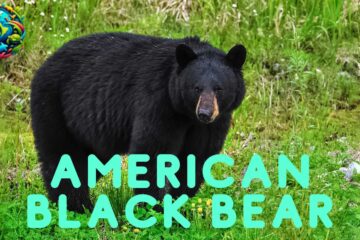
Elk: Amazing Emblem of the Forest and Plains
Elk: Amazing Emblem of the Forest and Plains
Introduction
The elk (Cervus canadensis) is one of the largest species in the deer family, known for its impressive antlers and powerful presence. Found in North America and parts of Asia, these magnificent animals are symbols of strength and grace. They play a crucial role in their ecosystems and have significant cultural and historical importance. This article explores the fascinating world of these creatures, covering their habitats, physical characteristics, behaviors, and much more.
Amazing Facts
These majestic creatures are extraordinary animals with numerous fascinating attributes:
- Antlers: Males, or bulls, grow large antlers that can reach up to 4 feet (1.2 meters) in length and weigh up to 40 pounds (18 kg). These are shed and regrown annually.
- Bugling: During the mating season, known as the rut, bulls produce a distinctive bugling call that can be heard for miles. This call is used to attract females and establish dominance.
- Speed: Despite their size, these animals can run at speeds of up to 45 miles per hour (72 km/h) and are strong swimmers.
- Social Structure: They are highly social and live in groups called herds. Herds are typically led by a dominant female, or cow, and can consist of hundreds of individuals.
- Conservation Status: Most populations are stable, but some subspecies are considered vulnerable due to habitat loss and hunting.
Habitat and Food
Elk are highly adaptable and thrive in various environments. Their diet is diverse, reflecting their opportunistic feeding habits.
Habitat:
- They inhabit forests, meadows, and plains across North America and parts of Asia. In North America, they are commonly found in the Rocky Mountains, Pacific Northwest, and parts of Canada.
- They prefer areas with abundant vegetation and access to water sources. During the summer, they often move to higher elevations to graze in alpine meadows, while in the winter, they descend to lower elevations to find food.
Food:
- They are herbivores and have a diverse diet that includes grasses, shrubs, bark, and leaves.
- During the spring and summer, they primarily graze on grasses and forbs, which are flowering plants. In the fall and winter, they browse on shrubs and tree bark when other food sources are scarce.
- These animals play a crucial role in their ecosystems by aiding in seed dispersal and maintaining plant diversity.
Appearance
Elk are known for their impressive and striking appearance. Key characteristics include:
- Size: Adult males typically weigh between 700 to 1,100 pounds (320 to 500 kg) and stand about 5 feet (1.5 meters) tall at the shoulder. Females are smaller, weighing between 500 to 600 pounds (225 to 275 kg).
- Color: Their coat varies seasonally, from reddish-brown in the summer to a more subdued grayish-brown in the winter. They have a distinctive light-colored rump patch and dark mane on their necks.
- Antlers: Bulls grow large, branching antlers that are shed and regrown annually. These antlers are used for display and combat during the rut.
Types/Subspecies
Elk are divided into several subspecies, each with unique traits and adaptations to their specific environments:
- Rocky Mountain Elk (Cervus canadensis nelsoni): Found in the Rocky Mountains and surrounding areas, known for their large size and impressive antlers.
- Roosevelt Elk (Cervus canadensis roosevelti): Inhabits the coastal rainforests of the Pacific Northwest, the largest of the subspecies.
- Tule Elk (Cervus canadensis nannodes): Native to California, they are the smallest subspecies and were once nearly extinct but have recovered due to conservation efforts.
- Manitoban Elk (Cervus canadensis manitobensis): Found in the northern Great Plains and southern Canada, known for their large bodies and antlers.
- Altai Wapiti (Cervus canadensis sibiricus): Inhabits the mountainous regions of Central Asia, particularly the Altai Mountains.
Predators and Threats
Despite their size and strength, these animals face various natural and human-induced threats that impact their survival.
Natural Predators:
- Wolves: Packs of wolves are among their primary predators, using their numbers and endurance to hunt these large ungulates.
- Bears: Both grizzly and black bears may prey on calves and, occasionally, adults.
- Mountain Lions: These solitary predators often target young or weakened individuals.
Threats:
- Habitat Loss: Urban development, agriculture, and deforestation reduce available habitats.
- Climate Change: Alters habitats and food availability, potentially impacting populations.
- Hunting: While regulated hunting helps manage populations, illegal poaching and overhunting in some areas can threaten specific herds.
- Disease: Chronic wasting disease (CWD) and other illnesses pose significant threats to populations.
Mating
Elks exhibit unique and complex mating behaviors, essential for the continuation of their species.
- Breeding Season: The rut occurs from September to October, during which bulls compete for access to females.
- Courtship Displays: Bulls use their antlers to spar with rivals and their bugling calls to attract females and establish dominance.
- Territoriality: Dominant males establish territories and gather harems of females, which they fiercely defend from other males.
- Gestation and Birth: After a gestation period of about 240 to 262 days, females give birth to a single calf, usually in late spring. Calves are hidden in dense vegetation for the first few weeks of life to protect them from predators.
- Parental Care: Mothers are highly attentive to their calves, nursing and protecting them until they are old enough to join the herd.
How They Communicate
Elks use various methods to communicate with each other, particularly during mating and social interactions.
Vocalizations:
- Bugling: Bulls produce loud bugling calls during the rut to establish dominance and attract females. These calls can carry over long distances.
- Grunts and Barks: Both sexes use grunts and barks to communicate with each other, particularly to signal alarm or maintain contact within the herd.
Body Language:
- Posturing: Bulls use displays of their antlers and body postures to assert dominance and intimidate rivals.
- Tail Flicking: They flick their tails to signal alertness and readiness to flee from predators.
Chemical Signals:
- Scent Marking: Males use scent glands and urine to mark their territory and signal reproductive status.
Religious and Cultural Significance
Elk hold significant symbolic and cultural importance in various societies, particularly in North America:
Indigenous Cultures:
- Symbol of Strength: Many Native American tribes view these creatures as symbols of strength, endurance, and agility. They feature prominently in myths, legends, and ceremonies.
- Hunting Traditions: Indigenous peoples have traditionally hunted them for their meat, hides, and antlers, using sustainable practices that honor the animal’s spirit.
Modern Symbolism:
- Conservation Icon: These animals are often used in conservation campaigns to raise awareness about wildlife protection and the importance of preserving natural habitats.
- Popular Culture: They appear in various forms of media, from literature and art to movies and advertising, symbolizing wilderness and the great outdoors.
Movies Featuring Elk
While Elk have not been the central focus of major feature films, they have been featured in various documentaries and nature films, showcasing their importance in the ecosystem and the challenges they face:
- “Planet Earth II” (2016): The “Mountains” episode includes stunning footage of these creatures in their natural habitat, showcasing their behaviors and interactions with other wildlife.
- “National Geographic: American Serengeti” (2010): A documentary that explores the diverse wildlife of North America’s grasslands, featuring these majestic animals among other species.
- “The Life of Mammals” (2002): Another David Attenborough documentary series that features these creatures, focusing on their social structures and survival strategies.
Pronunciation in Different Languages
The term for these majestic creatures is pronounced differently across various languages, reflecting linguistic diversity:
- English: /ɛlk/
- Spanish: /uápiti/ or /ciervo canadiense/
- French: /wapiti/
- German: /Wapiti/
- Italian: /wapiti/ or /cervo canadese/
- Mandarin Chinese: /美洲驼鹿 (měizhōu tuólù)/
- Japanese: /ワピティ (wapiti)/
- Russian: /вапити (vapiti)/
- Arabic: /الأيل (al-ayl)/
- Hindi: /हिरन (hiran)/
FAQs
Q: What do these animals eat? A: They are herbivores, consuming a diet that includes grasses, shrubs, bark, and leaves. Their diet varies seasonally, reflecting their adaptability to different environments.
Q: Where do they live? A: They inhabit forests, meadows, and plains across North America and parts of Asia, preferring areas with abundant vegetation and access to water sources.
Q: How do they communicate? A: They communicate through vocalizations, such as bugling, grunts, and barks, as well as body language and scent marking to establish territory and signal reproductive status.
Q: Are they endangered? A: Most populations are stable, but some subspecies are considered vulnerable due to habitat loss and hunting. Conservation efforts are essential to protect their populations.
Q: What is unique about their reproduction? A: During the rut, males compete for access to females through displays and vocalizations. After a gestation period of about 240 to 262 days, females give birth to a single calf, which they protect and nurture.
These majestic creatures symbolize the beauty and resilience of the forest and plains, playing a vital role in their ecosystems and human culture. This exploration highlights their unique traits and behaviors, celebrating the majesty and complexity of these remarkable animals
This Article is Sponsored by FINCTOP & TECHETOP






